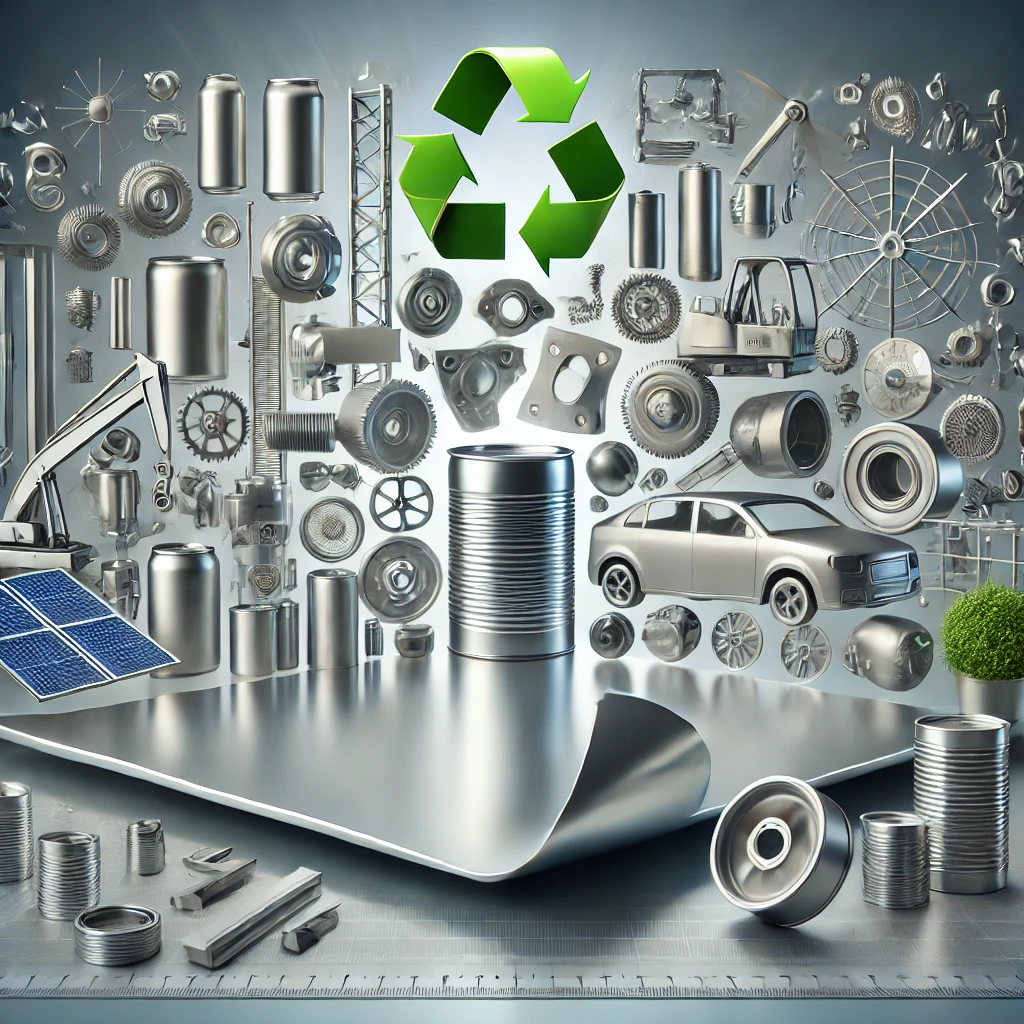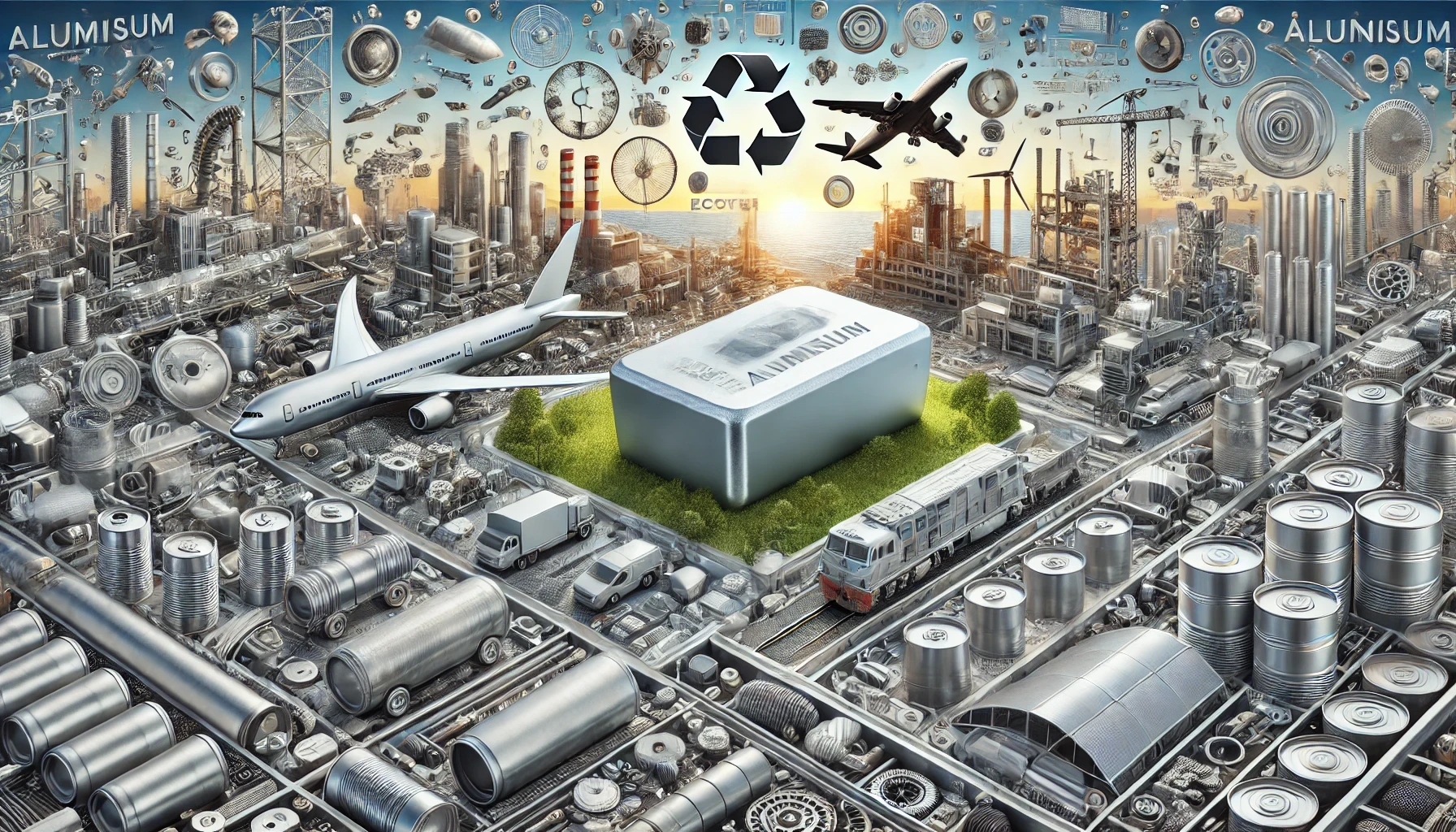Aluminium is one of the most widely used metals around the globe, very lightweight, strong, and resistant to corrosion. It has become an important part of a list of industries like construction, transport, packaging, and electronics. Majorly it is growing in demand due to its recyclability along with the fact that Aluminium Ore is present quite commonly in the Earth’s crust.
- Aluminum is lightweight and has High-strength Corrosion Resistance Excellent Conductivity.
- Aluminum smelting plants in India employ high technologies to produce high-quality aluminum.
- The Aluminium Production process encompasses refining, smelting, and fabrication.
- The Aluminum Ore Distribution in World is very widespread hence a surety source for the future demands.
India has seen the Evolution of Aluminium Industries in India very comprehensively in the last few decades. It has highly contributed to the economy and development.
| GS Paper | General Studies Paper I |
| Topics for UPSC Prelims | Aluminium production methods, recycling benefits, global demand and applications, and energy efficiency in industry |
| Topics for UPSC Mains | Sustainable development, role of aluminium in climate change mitigation, and policies for promoting recycling initiatives |
Evolution of Aluminium Industries in India
India has seen very great development of Aluminium Industries. India was producing aluminum since the early 20th century. The country’s enormous aluminium ore reserves have enabled this industry to steadily grow production activities over successive years, and today, it ranks among the world’s largest aluminium producers.
India’s aluminum sector follows the demand for lightweight and durable materials in industries such as construction, packaging, and transportation. The rapid industrialization in India has led the country to emerge as a haven for the establishment of Aluminium smelting plants. The industry is of prime importance in catering to both domestic and international markets.

Aluminium Ore Distribution in the World
Aluminum Ore, technically known as bauxite is the principal source of aluminum. Bauxite is available in various countries of the world. Countries involved include Australia, China, Brazil, Guinea, and India. Aluminum Ore Distribution in World is such that countries like Australia and Guinea have some of the largest reserves.
India has rich bauxite reserves as well. Available in abundance, the Aluminium Industry’s growth in the country has been this result of rich bauxite reserves only. Besides bauxite, aluminum ore types cryolite and corundum are also being used in the Aluminum Production process.
Aluminium Production Process
The Aluminum Production process has three significant phases: mining, refining, and smelting. Miners mine bauxite, and aluminium ore, directly from the earth in the first stage. They then refine the bauxite to extract alumina or aluminium oxide using the Bayer process and melt this alumina to extract pure aluminum.
Indian aluminum smelting plants are using new technologies to produce efficiently and minimize the impact on the environment. The industry is taking several initiatives in the area of energy consumption and emissions reduction. In the electrolytic cells the oxygen splits away from the aluminum is where the smelting takes place.
Why Aluminium is Called the Green Metal?
Aluminium is known as green metal, as aluminum is environmentally friendly. Aluminum can be recycled infinitely with no loss to its properties. It consumes only 5% energy of that required in primary production and thus has a much lesser carbon footprint.
The recyclability of aluminum is the reason why it is considered to be a sustainable material. Many industries prefer aluminum not only for its strength but also from the point of energy contribution. Products made of recycled aluminum will contribute less to greenhouse gases, and therefore, the aluminum industry takes credit for being environmentally friendly.
Aluminium Smelting Plants in India
India has many modern Aluminium smelting plants. Most of the major smelting plants are located in the states of Odisha, Jharkhand, Chhattisgarh, and West Bengal. They convert the bauxite into aluminum very efficiently through power-saving processes.
Government and private investment is the dual support that works for this industry in India. They operate by being sustainable, managing waste, and conserving energy. Therefore, Indian aluminum production has emerged as competitive in the world market.
Aluminium Advantages
Numerous Aluminium Advantages make it the metal of choice across various industries. Some key benefits include:
- Lightweight: Aluminium is about one-third the weight of steel, making it ideal for transportation and construction.
- Corrosion Resistance: Its natural oxide layer protects it from corrosion, enhancing its durability.
- High Strength: Despite being lightweight, aluminum alloys exhibit impressive strength.
- Recyclability: Aluminum can be recycled repeatedly without losing its quality, reducing environmental impact.
- Conductivity: Aluminium is an excellent conductor of heat and electricity, making it valuable in electronics.
- Malleability: It can be easily molded into different shapes, offering design flexibility.
- Reflectivity: Its reflective nature makes it useful in lighting fixtures and insulation materials.
- Non-Toxicity: Aluminium is non-toxic and safe for use in food packaging and cooking utensils.
Aluminium in Different Industries
The Aluminum Industry spans across multiple sectors. Its properties make it suitable for a wide range of applications:
Construction and Building
Aluminum is extensively used in the construction sector for windows, doors, roofing, and cladding. Its lightweight and corrosion-resistant properties make it a preferred material for sustainable buildings.
Transportation
In the transportation sector, aluminum is used in manufacturing aircraft, automobiles, and trains. Its lightweight nature enhances fuel efficiency and reduces emissions.
Packaging
Aluminum is widely used in packaging, particularly for food and beverages. Its non-toxic nature and resistance to corrosion help preserve the quality of packaged goods.
Electronics and Electrical
The Aluminum Production process produces highly conductive aluminum. It is used in electrical wiring, power transmission lines, and electronic components.
Consumer Goods
Aluminum is also present in consumer goods like smartphones, laptops, kitchenware, and sports equipment. Its durability and aesthetic appeal make it popular in these applications.

Future of the Aluminium Industry
The future holds much promise in the Aluminum Industry. Alternatives from electric vehicles, renewable energy and sustainable construction are areas of increasing demand. Efforts toward energy efficiency through more efficient production and improved recycling will continue to enhance aluminium’s status as a green metal.
Advanced technologies in smelting plants will ensure further use of aluminum smelting plants in India. This would enhance the producers’ efficiency and raise production at an increased reduction in damages to environmental elements. Stabilized supply levels during the next few decades ensure a sustainable industrial growth for the industry as revealed from Aluminum Ore Distribution in World.
Conclusion
Aluminium is indeed a metal of the future, thanks to its versatility, recyclability, and wide range of applications. Its unique advantages make it indispensable across industries, from construction to electronics. The Evolution of Aluminium Industries in India has been marked by technological advancements, contributing significantly to the economy.
| Aluminium UPSC Notes |
| 1. Aluminium is lightweight, strong, and resistant to corrosion, making it suitable for various applications in construction, transportation, and packaging. 2. The metal is highly recyclable, with recycling processes using only 5% of the energy required for primary production, significantly reducing carbon emissions. 3. It has excellent thermal and electrical conductivity, which makes it valuable in electrical applications, including power lines and electronic devices. 4. Aluminum’s malleability allows it to be easily shaped into complex forms, contributing to its use in innovative designs and architecture. 5. The global demand for aluminum is rising due to its role in promoting energy efficiency, especially in the automotive and aerospace industries. 6. As a sustainable material, aluminum contributes to reducing overall environmental impact and supports the transition to a circular economy through recycling initiatives. |



